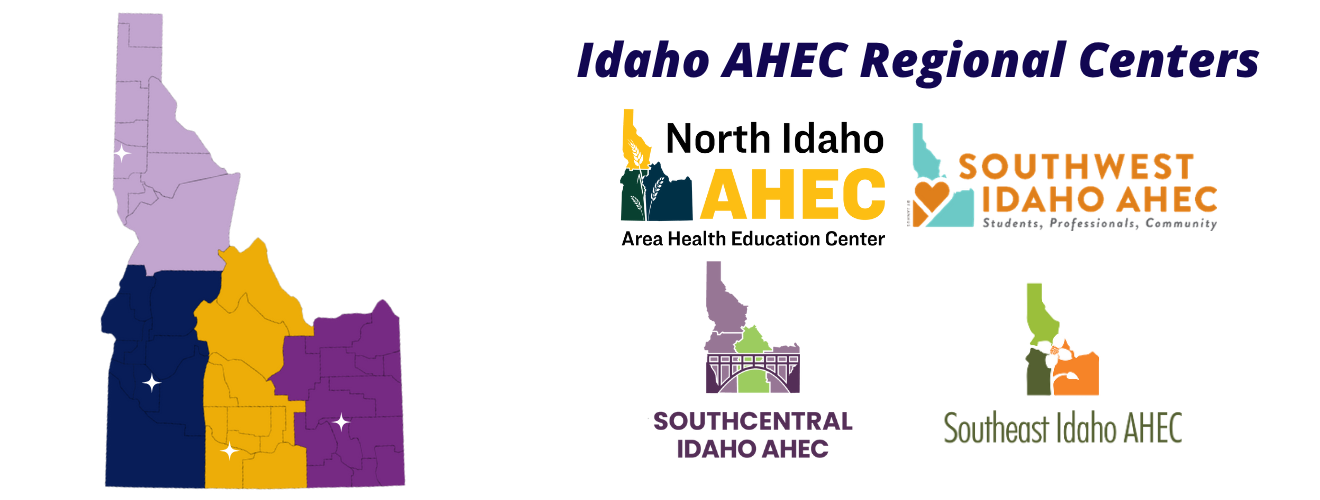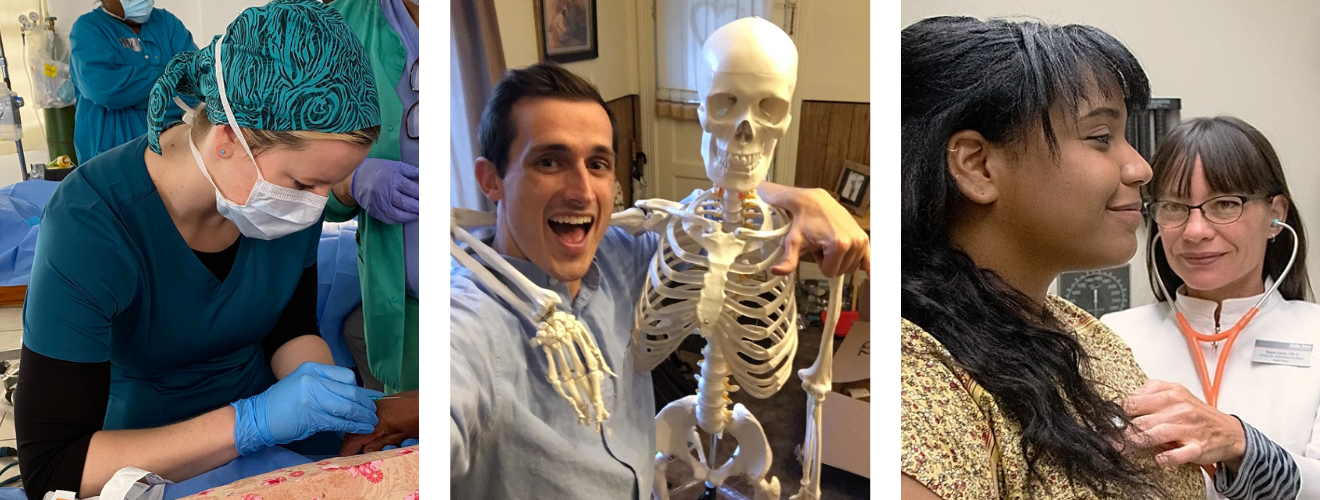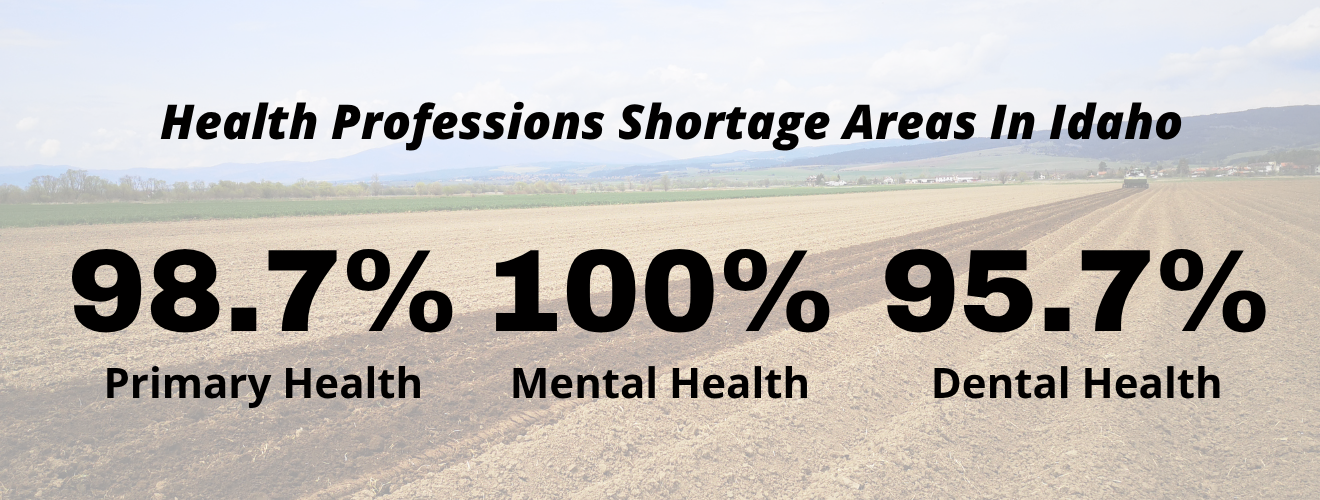Growing Idaho's Health Workforce
From classroom to career, we connect students, educators, and communities to strengthen health care in rural and medically underserved Idaho.
Who We Are
We are Idaho AHEC — a statewide network building bridges between students, educators, and communities to grow the health workforce our state needs.
From our Program Office at Idaho State University, we connect four regional AHEC centers that serve every corner of Idaho. Together, we prepare students for health careers, support today’s professionals, and strengthen care in rural and underserved communities.
At our core, we believe in growing our own — inspiring Idaho students to see a future in health care and helping them put down roots close to home.
Where We Work

Idaho AHEC is a statewide network with local impact. From the mountains of North Idaho to the Magic Valley, the Treasure Valley, and Southeast Idaho, our four regional AHEC centers bring programs and training directly to the communities they serve.
Each regional center is uniquely connected to its schools, health systems, and local partners — ensuring that students and professionals get opportunities close to home.
Our Regions:
-
North Idaho AHEC – Serving the Panhandle and northern counties
-
Southwest Idaho AHEC – Serving the Treasure Valley and surrounding communities
-
Southcentral Idaho AHEC – Serving the Magic Valley and central region
-
Southeast Idaho AHEC – Serving eastern and southeastern Idaho
Together, these centers ensure that every corner of Idaho has access to pathway activities, AHEC Scholars opportunities, and continuing education.
What We Do

Four Focuses that Drive Our Work
The Idaho Area Health Education Center (AHEC) Program Office supports a statewide network dedicated to building and sustaining Idaho’s health workforce. Our work centers on four pillars:
-
AHEC Scholars – Preparing the next generation
A two-year program for health professions students that combines rural experiences, interprofessional teamwork, and community engagement. - 8-12 Grade Pathway Programs – Inspiring future providers
Hands-on activities like Scrubs Camp, Doc for a Day, and classroom visits that spark interest in health careers for Idaho youth. -
Continuing Education – Supporting today’s workforce
Trainings and professional development that strengthen skills in areas like geriatrics, behavioral health, and rural health care. -
Community-Based Training – Connecting learning to Idaho communities
Clinical rotations and experiences that help students build roots where providers are needed most.
Why We Do It

Idaho’s communities deserve access to quality health care close to home. Yet many parts of our state — especially rural and frontier counties — face critical shortages of doctors, nurses, and other health professionals. In fact, 35 of Idaho’s 44 counties are designated Health Professional Shortage Areas, and by 2030 the state is projected to face a shortage of more than 5,000 nurses.
We know the solution starts here in Idaho. By inspiring students, supporting their training, and helping them build roots in local communities, we are growing our own workforce for the future.
Every program we offer — from Scrubs Camps to AHEC Scholars — is designed to connect Idahoans with the skills, experiences, and confidence they need to serve where they are needed most.
Get Involved
Idaho AHEC is all about connection — and there’s a place for you in our work. Whether you’re a student exploring health careers, an educator looking to bring programs to your school, or a community partner ready to collaborate, we want to work with you.
Ways to Get Involved:
-
Students – Apply to be an AHEC Scholar. Gain hands-on training, rural experiences, and a statewide network of peers and mentors.
-
Educators & Schools – Bring pathway activities to your classroom or community. From Scrubs Camp to Doc for a Day, we’ll help inspire the next generation of providers.
-
Community & Health Partners – Collaborate with your regional AHEC center. Partner on clinical training, continuing education, or local workforce initiatives.
Stevens Statement
This project is/was supported by the Health Resources and Services Administration (HRSA) of the U.S. Department of Health and Human Services (HHS) under grant number U7746221, for the Idaho Area Health Education (Idaho AHEC) Program Office and its four regional Centers in the total amount of $733,633 for the 2025-2026 fiscal year (with a 1:1 total match of $733,633 from non-federally funded governmental sources). This information or content and conclusions are those of the author and should not be construed as the official position or policy of, nor should any endorsements be inferred by HRSA, HHS, or the U.S. Government.
